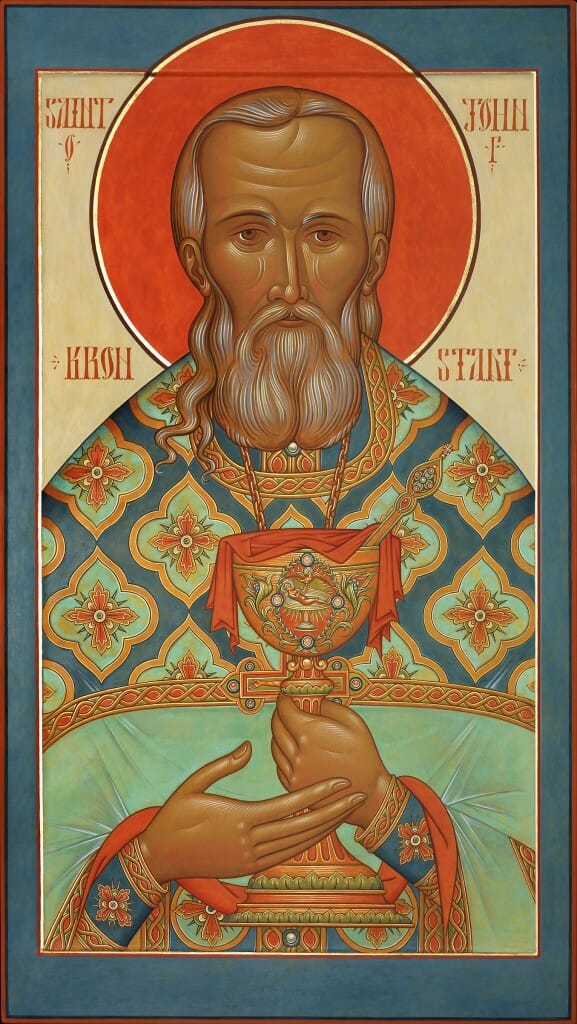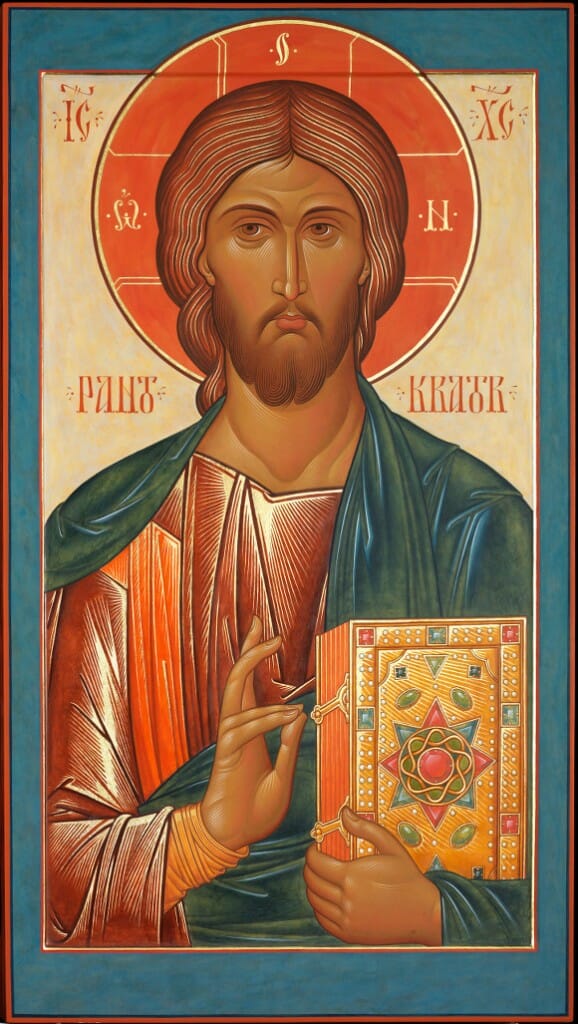Similar Posts
Father Silouan has sent me a picture of his most recent icon of Saint John of Kronstadt. I wanted to point out some of the elements which appear in his icon as examples of what Fr. Silouan has been discussing in his articles. In several of Fr. Silouan’s articles he has been addressing the need for iconographers to not simply copy models mindlessly, but rather to be engaged in creating icons that are fully traditional, fully liturgical while also being alive and continuing to participate in the transfiguration of the world. Fr. Silouan often proposes the possibility of taking the best of modern art, and integrating it in a careful and prayerful manner.
This icon is wonderful in that many elements of modern art can be detected, yet I believe these do not distract the viewer, do not attract attention to their own innovation. With careful observation, one will notice how this image is very subtle, deliberate and complex, though this is not immediately apparent. The experience we get from looking at it is a calm vibrancy. Of course this experience of the icon is partially in the drawing, in the hieratic eyes of the saint, his softened features and delicate movement. The slightly de-centered composition with the shape of the chalice being an inverted reminder of the shape of the shoulders also creates a sense of dynamic unity.
There would be much more to say, but I want to focus on the use of color composition which is probably the most obvious place to see some elements of modern art at play. By framing the figure tightly so that the arms from the shoulders down are out of the picture’s edge, the colors on the vestments become large semi abstract shapes that interact with each other. If one looks at how the turquoise is used in the icon, one will see how it becomes a large “color field” (to use an expression from abstract painting). Then through the reuse of the same turquoise in the patterns there is a play of depth and space. The colors are not as bound as they would be if the figure were completely surrounded by a background color. This play of space and color is accentuated by the fact that the outer border is the same dark blue as the negative space for the patterns and so the patterns on the vestment can seem to “float” above the blue. This “push and pull” is truly in the icon, and for having discussed it with fr. Silouan, I know it is deliberate. The concepts of push and pull were made explicit by the late modern abstract painter Hans Hoffman, who by experimenting with shape and color, with notions of positive and negative space, was able create this play of space and depth, calling attention to a dynamism of the picture plane. Of course in the icon we are far from the bold abstraction of Hans Hoffman! And so I do not believe this push and pull is distracting, rather it participates in our encounter of the saint. If I had not mentioned it, I am certain most people would not have even have noticed it explicitly, though still experiencing intuitively the calm vibrancy mentioned at the outset.

Hans Hoffman. To Miz – Pax Vobiscum
1964. Oil on canvas
77 3/8 x 83 3/8 inches (196.5 x 212.4 cm)
Collection Modern Art Museum of Forth Worth, Museum purchase



What is the medium used for this icon?
Fr. Silouan’s icons are egg tempera with goldleaf.